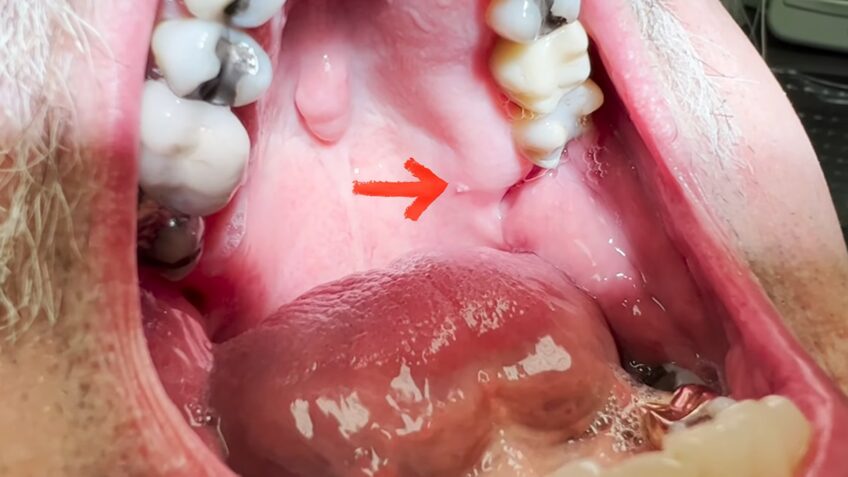The other day, I encountered an anxious patient in my clinic. She had discovered an unusual bump on her tongue while brushing her teeth and immediately took to the internet to self-diagnose. Reading about the possibility of an HPV infection, she grew increasingly worried.
Such encounters are not rare in my practice and have led me to realize the pressing need for clear, accurate information about human papillomavirus and oral health. In this blog post, I hope to demystify the issue, breaking down the science into digestible information for all readers.
An Overview of HPV
First, let’s get to know our enemy. Human papillomavirus (HPV) is a group of more than 200 related viruses, some of which are linked to various forms of cancer.
Human papillomavirus is a common virus that is often transmitted through intimate skin-to-skin or sexual contact. It is so prevalent that nearly all sexually active men and women will get at least one type of human papillomavirus at some point in their lives.
Although the majority of human papillomavirus infections do not lead to cancer, certain high-risk types can cause cancer in parts of the body where HPV infection occurs, such as the cervix, oropharynx (including the base of the tongue and tonsils), anus, rectum, penis, vagina, and vulva.
It is essential to understand the dormancy period of an HPV infection, especially when dealing with concerns like HPV bumps on your tongue. Learn more about the duration of dormancy and potential risks for better awareness.
Types of HPV and Their Risks
There are about 14 “high-risk” types of HPV that can lead to cancer. Human papillomavirus types 16 and 18 are the most dangerous, causing 70% of cervical cancers and many other HPV-related cancers.
HPV types 6 and 11, on the other hand, are low-risk but can cause warts, including on the tongue, and recurrent respiratory papillomatosis, a less common disease in which benign tumors grow in the air passages leading from the nose and mouth into the lungs.
Connection With Oral Health
Now that we understand HPV let’s explore its relationship with oral health. This is crucial since oral human papillomavirus can lead to cancers of the mouth and throat.
Oral Human Papillomavirus Infection
Oral HPV infection is usually asymptomatic and does not result in any signs or symptoms. However, in some cases, it could lead to oropharyngeal cancer.
Several studies have shown that oral HPV infection is more common in men than in women. Risk factors for acquiring oral human papillomavirus include certain sexual behaviors, such as having oral sex with an infected person, having many sexual partners, and regular tobacco and alcohol use.
HPV Bumps on the Tongue
While warts, or bumps, caused by HPV often appear on other parts of the body, they can also occur in the mouth and on the tongue.
These oral warts can appear as:
- Single bumps or clusters of bumps
- White or slightly pink in color
- Either smooth or slightly rough texture
However, not all bumps on the tongue are caused by HPV, so it is essential to consult a healthcare professional for a proper diagnosis.
Diagnosis and Testing
When it comes to health issues, diagnosis is half the battle. It’s equally true for HPV-related tongue bumps.
How are Human Papillomavirus Tongue Bumps Diagnosed?
Most often, the healthcare provider will perform a visual inspection to diagnose human papillomavirus tongue bumps. They might use a special light or a magnifying tool to see the mouth and tongue better.
In some cases, they might perform a biopsy, which involves taking a small sample of the affected tissue for laboratory testing. This test can confirm if the bump is indeed caused by HPV and what type of HPV is present.
Other Tests
Besides diagnosing human papillomavirus from bumps on the tongue or other warts, there are other tests for HPV, especially for high-risk types related to cervical cancer.
These tests include:
- Pap test (or Pap smear), which collects cells from the cervix to check for abnormalities.
- HPV test, which examines the sample for the presence of high-risk human papillomavirus types.
- For men, there are currently no recommended HPV tests, but physical examination can detect warts and cancers.
Treatment Options
The news of an HPV infection can be distressing, but there are treatment options available.
Managing Oral Warts

While there is no cure for the virus itself, the symptoms – such as warts – can be treated. Most human papillomavirus infections, including oral warts, will go away on their own due to the body’s immune response.
However, in some cases, oral warts may persist and require treatment, which can include:
- Topical treatments
- Cryotherapy (freezing)
- Surgery
Oropharyngeal Cancer Treatment
When HPV leads to oropharyngeal cancer, treatment often involves radiation therapy, surgery, chemotherapy, or a combination of these treatments.
- Radiation therapy uses high-energy X-rays or other types of radiation to kill cancer cells or prevent them from growing.
- Surgery aims to remove the tumor and some surrounding healthy tissue.
- Chemotherapy uses drugs to stop the growth of cancer cells, either by killing the cells or stopping them from dividing.
Prevention of HPV Infections
While treatment is available, prevention is always better. Let’s discuss how to protect ourselves from HPV infections.
Vaccination
One of the most effective ways to prevent human papillomavirus infection is through vaccination. The HPV vaccine is safe and effective and can protect against diseases (including cancers) caused by HPV.
The vaccine is recommended for preteen boys and girls at age 11 or 12 so they are protected before ever being exposed to the virus. However, vaccination is also recommended for everyone through age 26 if they were not adequately vaccinated when they were younger.
Other Preventive Measures
Apart from vaccination, other preventive measures can significantly reduce the risk of HPV infection. These include:
- Using condoms or dental dams during sexual activities can lower the chances of acquiring HPV. However, human papillomavirus can infect areas not covered by a condom, so they don’t fully protect against HPV.
- Limiting the number of sexual partners and choosing a partner who has had no or few prior partners can also reduce the risk.
- Regular screenings for cervical cancer (Pap and HPV tests) can help detect precancerous conditions, which can be treated before they develop into cancer.
Final Words
While HPV bumps on the tongue can cause anxiety and distress, they can be diagnosed and managed with proper medical guidance. Awareness and education about human papillomavirus, its transmission, and prevention are critical to decreasing its spread and impact on our health. Always consult with your healthcare provider for personalized advice.

